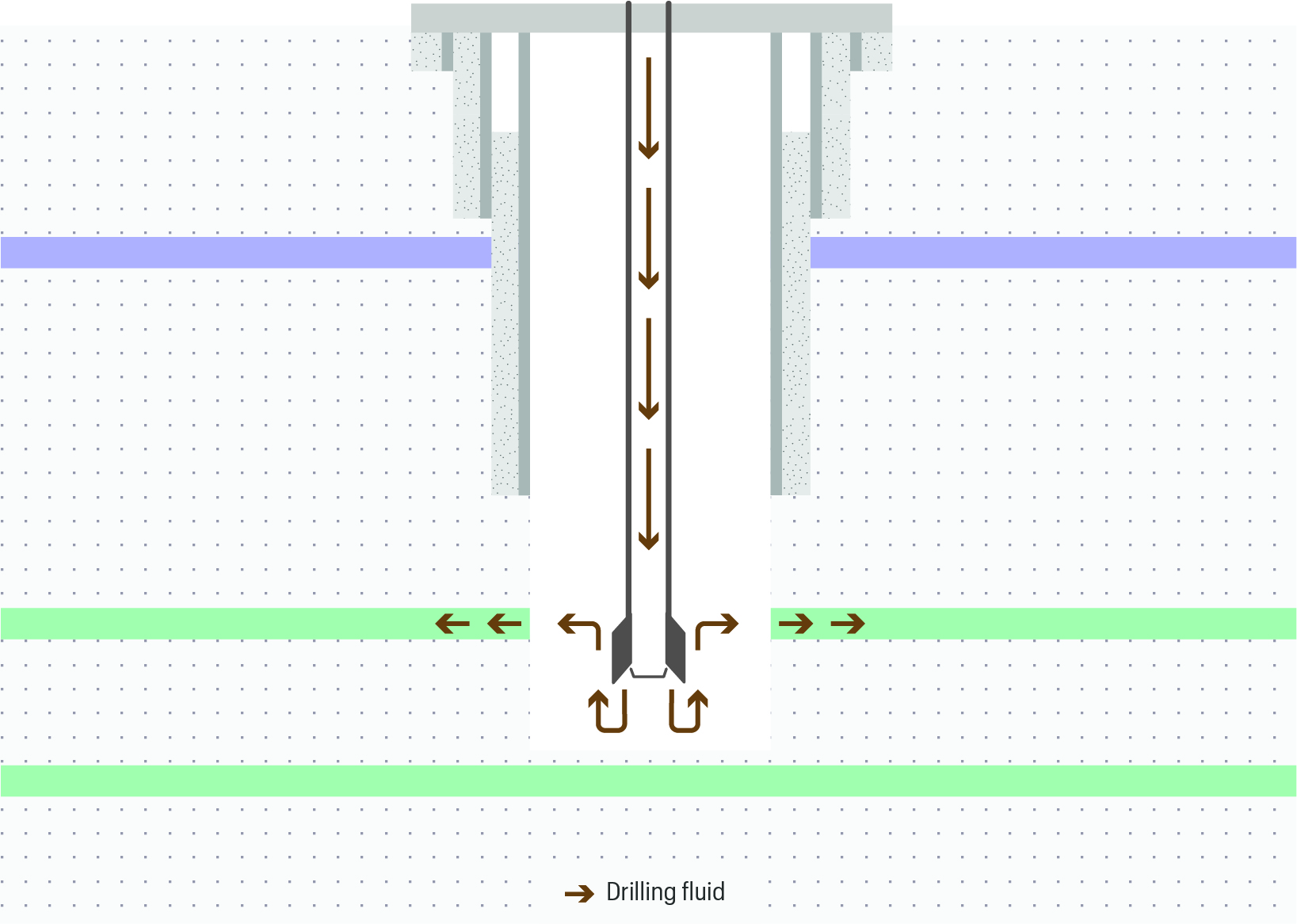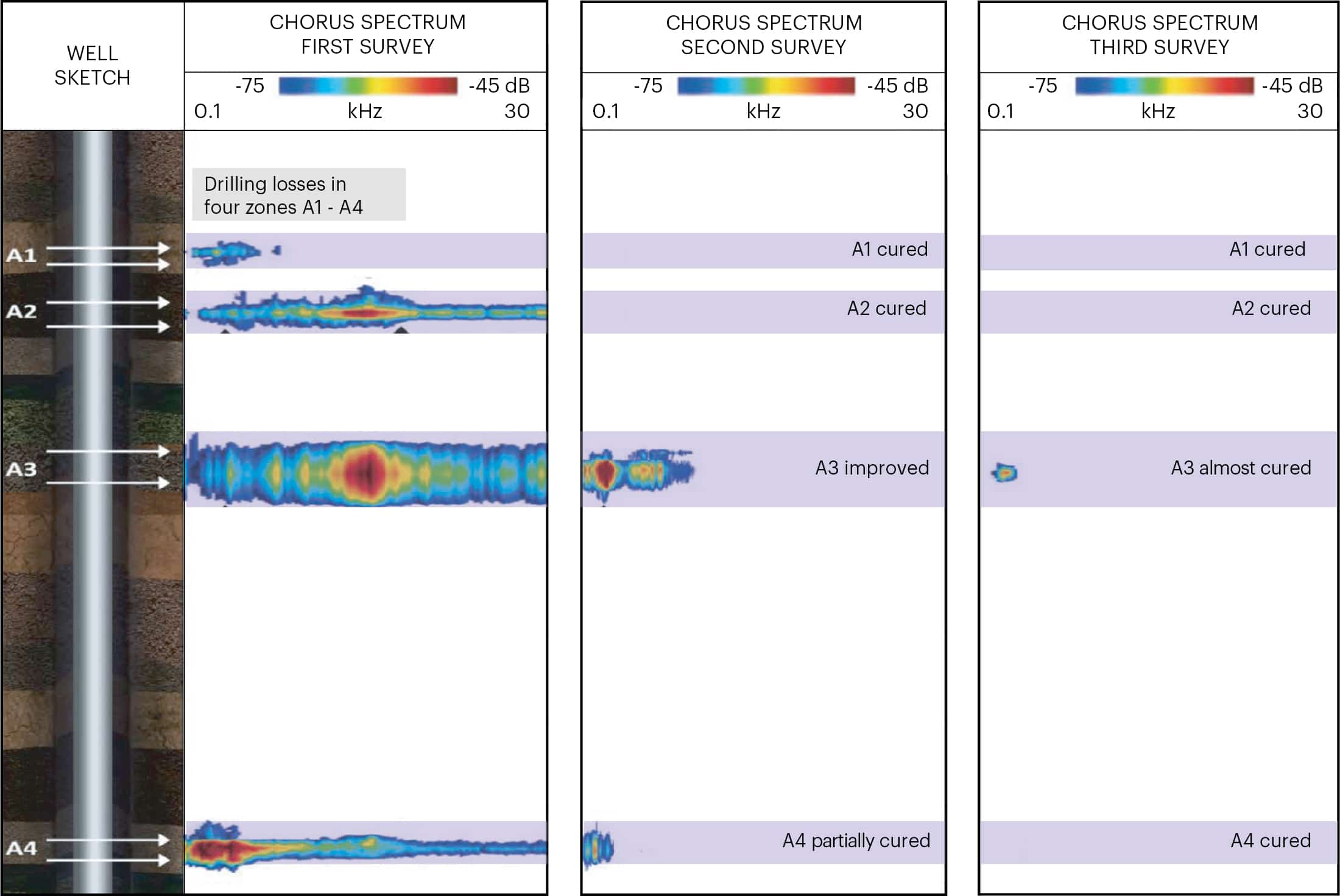Drilling fluid losses can pose a significant risk to personnel safety and the environment, complicate drilling and cementing operations, and cause costly delays.
A customer was experiencing mud losses and gas kicks whilst drilling a well with high hydrogen sulphide concentration. All remediation attempts, including mud weight adjustment, had been unsuccessful and mud losses had persisted for several weeks. Chemical, drilling fluid and rig time costs were spiralling upwards so the customer needed to locate the lost-circulation zones quickly and reliably.


